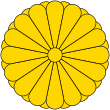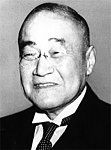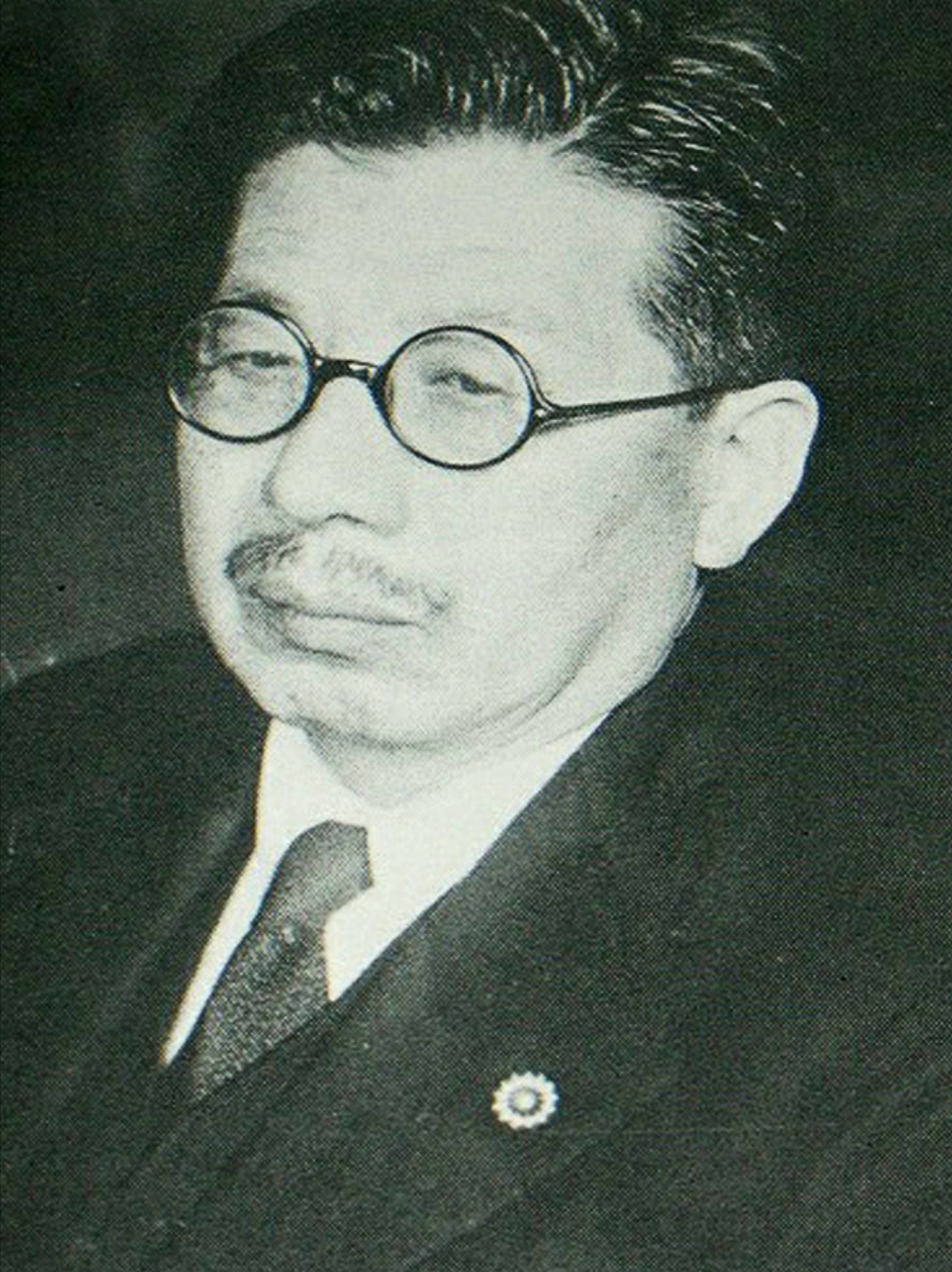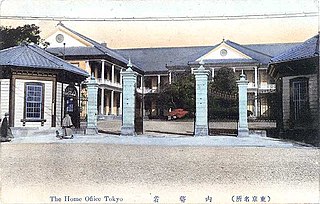
The politics of Japan are conducted in a framework of a multi-party bicameral parliamentary representative democratic constitutional monarchy whereby the Emperor is the ceremonial head of state and the Prime Minister is the head of government and the head of the Cabinet, which directs the executive branch.
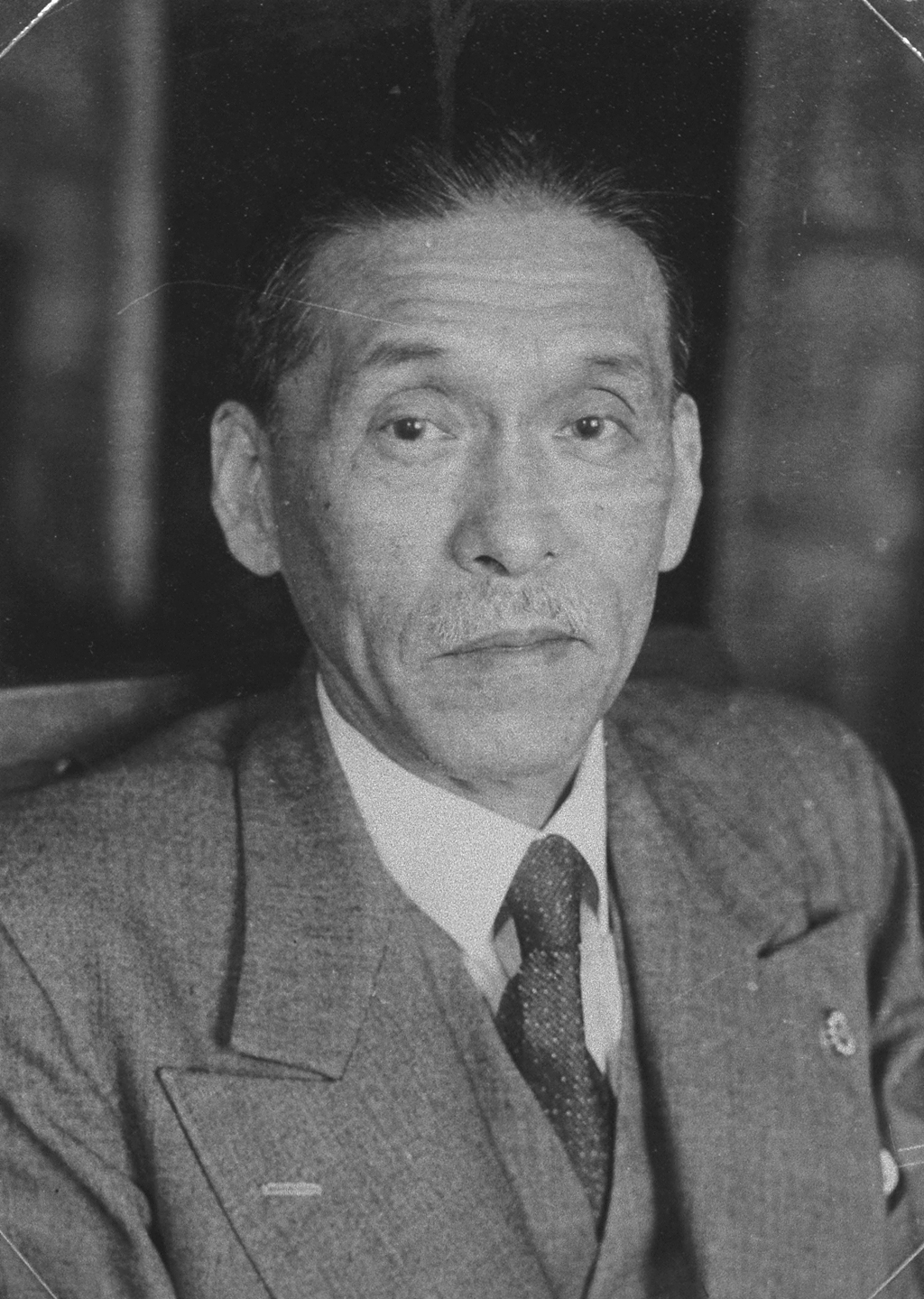
Hitoshi Ashida was a Japanese politician who served as the 34th Prime Minister of Japan from 10 March to 15 October 1948. He was a prominent figure in the immediate postwar political landscape, but was forced to resign his leadership responsibilities after a corruption scandal targeting two of his cabinet ministers.

The House of Representatives is the lower house of the National Diet of Japan. The House of Councillors is the upper house.
The Japanese political process has three types of elections: general elections to the House of Representatives held every four years, elections to the House of Councillors held every three years to choose one-half of its members, and local elections held every four years for offices in prefectures, cities, and villages. Elections are supervised by election committees at each administrative level under the general direction of the Central Election Administration Committee, an attached organization to the Ministry of Internal Affairs and Communications (MIC). The minimum voting age in Japan's non-compulsory electoral system was reduced from twenty to eighteen years in June 2016. Voters must satisfy a three-month residency requirement before being allowed to cast a ballot.
Events in the year 1946 in Japan.
Events in the year 1947 in Japan.
The 1955 system (55年体制), also known as the 'one-and-a-half party system', refers to the party system in Japan from 1955 to 1993 in which the Liberal Democratic Party (LDP) successively held majority government while the major opposition the Japan Socialist Party (JSP) was incapable of forming an alternative. The terms 1955 system and one-and-a-half system are credited to Junnosuke Masumi who describes the system of 1955 as "a grand political dam into which the history of Japanese politics surge.” The years of Japan under 1955 regime witnessed the economic miracle, but also the dominance of the ruling party in the Diet, with an undergirded tight connection between the bureaucracy and the business sector. Due to a series of LDP scandals and the 1992 burst of Japanese asset price bubble, LDP lost its majority in the House of Representatives in the 1993 general election.
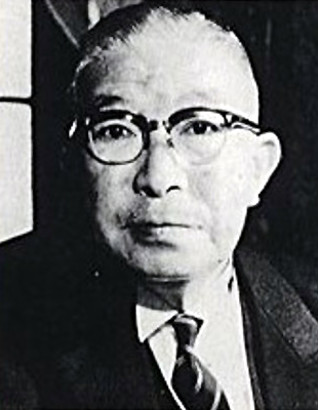
General elections were held in Japan on 10 April 1946, the first after World War II. Voters had one, two or three votes, depending on how many MPs were elected from their constituency. The result was a victory for the Liberal Party, which won 148 of the 464 seats. Voter turnout was 72.1 percent.
Hiroshima 7th district is a constituency of the House of Representatives in the Diet of Japan. It is located in Hiroshima and consists of the city of Fukuyama. As of 2012, 377,672 eligible voters were registered in the district.
Shiga 1st district is a single-member constituency of the House of Representatives, the lower house of the national Diet of Japan. It is located in Western Shiga and covers the cities of Ōtsu, the prefectural capital, and Takashima. As of 2009, 314,742 eligible voters were registered in the district.

Kanagawa 10th district is a single-member electoral district for the House of Representatives, the lower house of the National Diet of Japan. It is located in North-eastern Kanagawa Prefecture and consists of Kawasaki City's three eastern wards of Kawasaki, Saiwai and Nakahara. As of September 2011, 494,755 voters were registered in the district, giving its voters the second lowest vote weight in the country behind Chiba 4th district.
Niigata 5th district is a single-member electoral district for the House of Representatives, the lower house of the National Diet of Japan. It is located in the central, Chūetsu region of Niigata and covers parts of Nagaoka City, the cities of Ojiya, Uonuma, Minami-Uonuma as well as the former Minami-Uonuma County that, as of 2012, only has one remaining municipality: Yuzawa Town. As of September 2012, 282,904 voters were registered in Niigata 5th district, giving its voters above average vote weight.

Yamaguchi 4th district is a single-member electoral district for the House of Representatives, the lower house of the National Diet of Japan. It is located in Western Yamaguchi and consists of the cities of Shimonoseki and Nagato. As of September 2011, 266,456 voters were registered in the district, giving its voters well above average vote weight. Unlike many prefectures where the capital is also the most populous city, Yamaguchi's major city is Shimonoseki, located at the western tip of Honshū and part of the Fukuoka-Kitakyūshū metropolitan area.

The 47th general election of members of the House of Representatives of Japan was held on 14 December 2014. Voting took place in all Representatives constituencies of Japan including proportional blocks, in order to appoint Members of Diet to seats in the House of Representatives, the lower house of the National Diet of Japan. As the cabinet resigns in the first post-election Diet session after a general House of Representatives election, the lower house election also led to a new designation election of the prime minister in the Diet, and the appointment of a new cabinet. The turnout in this election is the lowest in Japanese history.
Yamanashi 1st district is a single-member electoral district for the House of Representatives, the lower house of the National Diet of Japan. It covers Northern Yamanashi, namely the capital Kōfu, the cities of Yamanashi and Kōshū and the former town of Kasugai in today's Fuefuki City. As of September 2012, 218,115 voters were registered in the district, giving its voters one of the highest vote weights in the country.
Shiga 2nd district is a single-member electoral district for the House of Representatives, the lower house of the National Diet of Japan. It covers Northeastern Shiga, today namely the cities of Hikone, Nagahama, Maibara, the dissolved towns of Aitō and Kotō in present-day Higashiōmi City and the former counties of Echi and Inukami. The district borders were redrawn in the 2002 redistricting and reapportionment, before that it had reached further to the South and covered Yōkaichi and Ōmihachiman cities and all of Echi, Kanzaki and Gamō counties. As of 2012, 264,168 voters resided in the district.

The Katayama Cabinet governed Japan under the leadership of Prime Minister Tetsu Katayama from May 1947 to March 1948. It was the first cabinet under the postwar constitution.
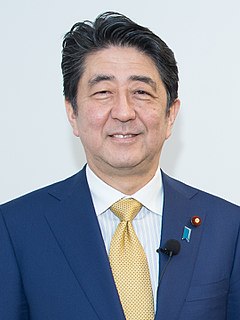
The 48th general election of members of the House of Representatives took place on 22 October 2017. Voting took place in all Representatives constituencies of Japan – 289 single-member districts and eleven proportional blocks – in order to appoint all 465 members of the House of Representatives, the lower house of the then 707-member bicameral National Diet of Japan. Incumbent Prime Minister Shinzō Abe's governing coalition of the Liberal Democratic Party (LDP) and Komeito retained their seats in light of what was perceived as weak opposition, winning his fourth term in office and holding on to the two-thirds supermajority in order to revise the war-renouncing Article 9 of the Japanese Constitution.

The 49th general election of members of the House of Representatives is scheduled on or before 22 October 2021, as required by the Constitution of Japan. Voting will take place in all Representatives constituencies of Japan including proportional blocks, in order to appoint Members of Diet to seats in the House of Representatives, the lower house of the National Diet of Japan. As the cabinet has to resign after a general House of Representatives election in the first post-election Diet session, the lower house election will also lead to a new designation election of the Prime Minister in the Diet, and the appointment of a new cabinet.
